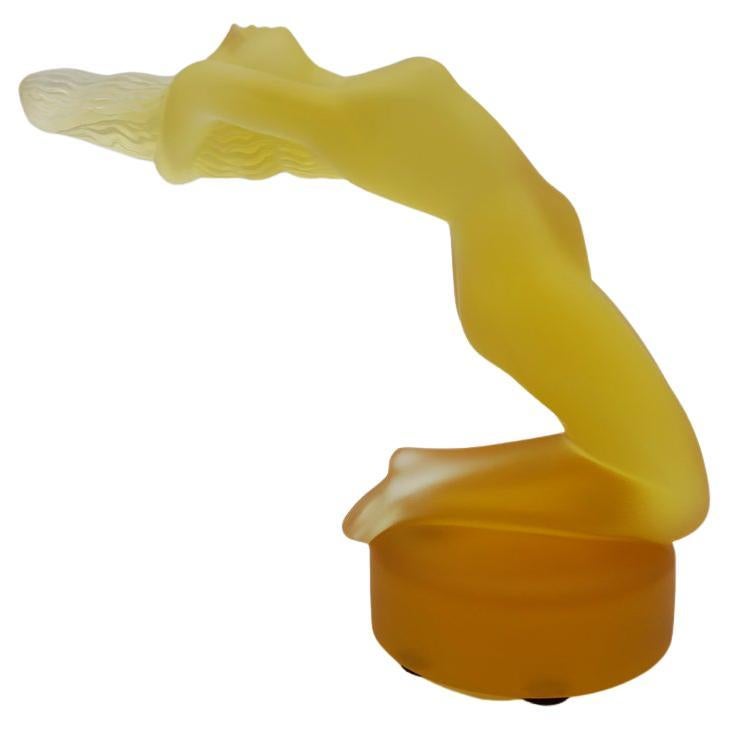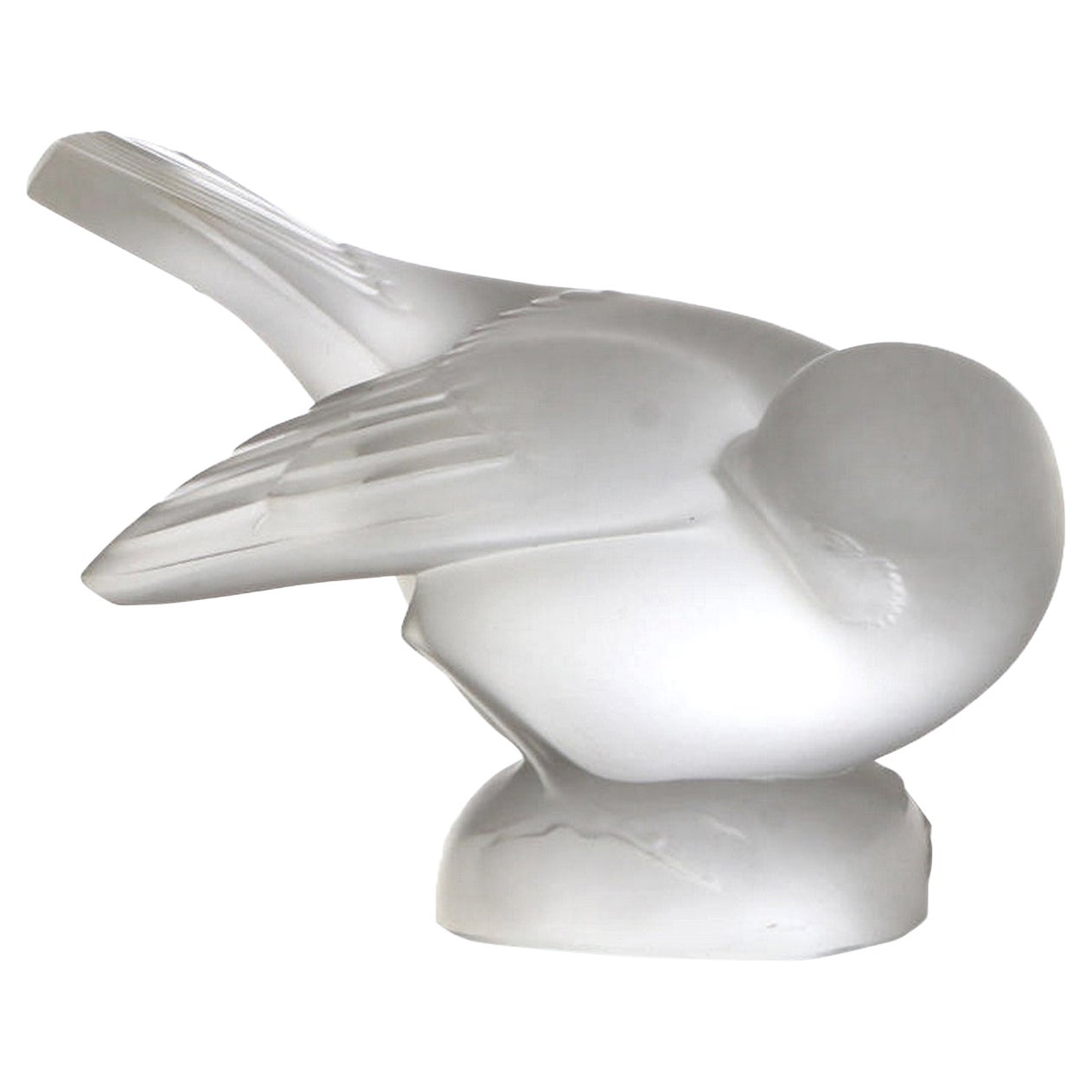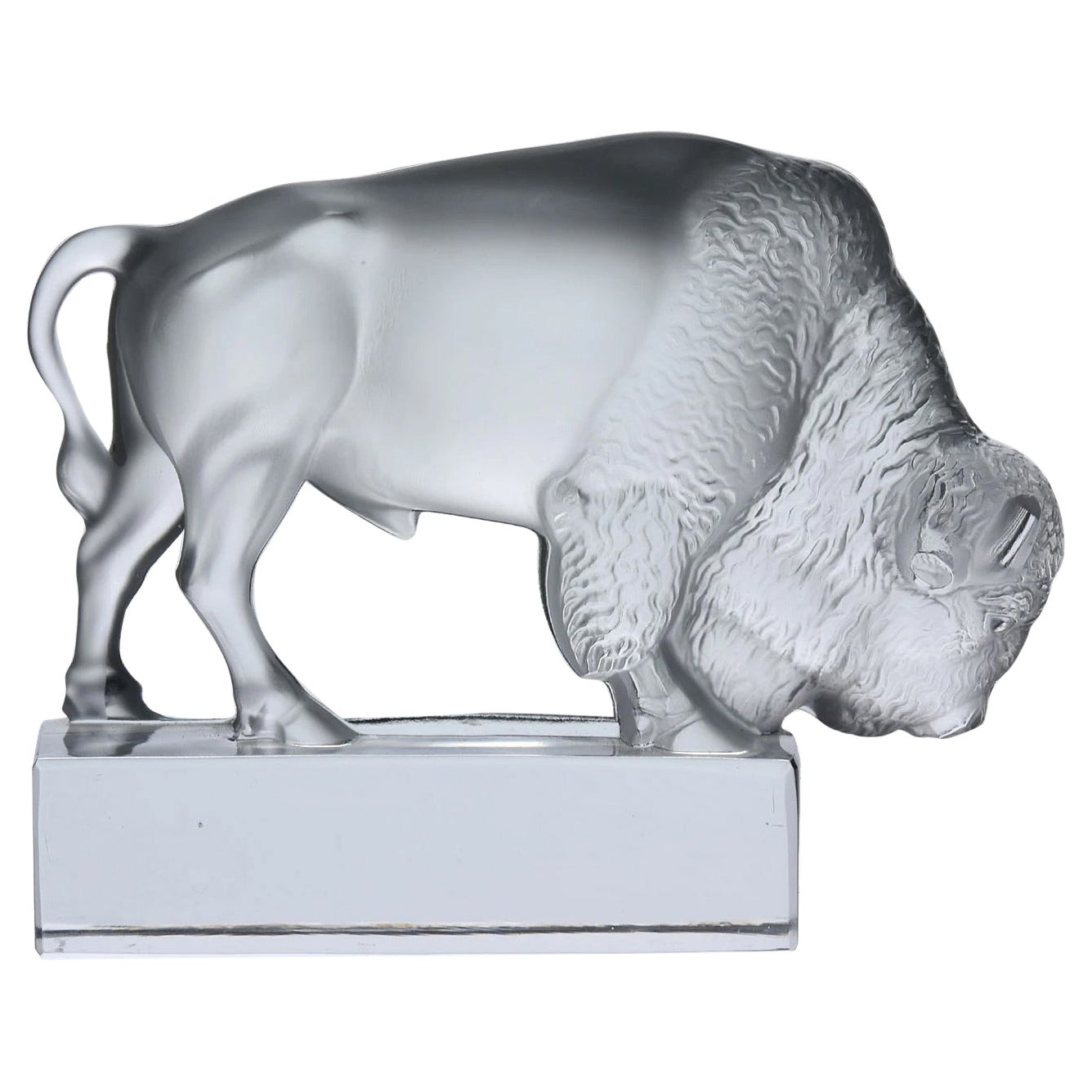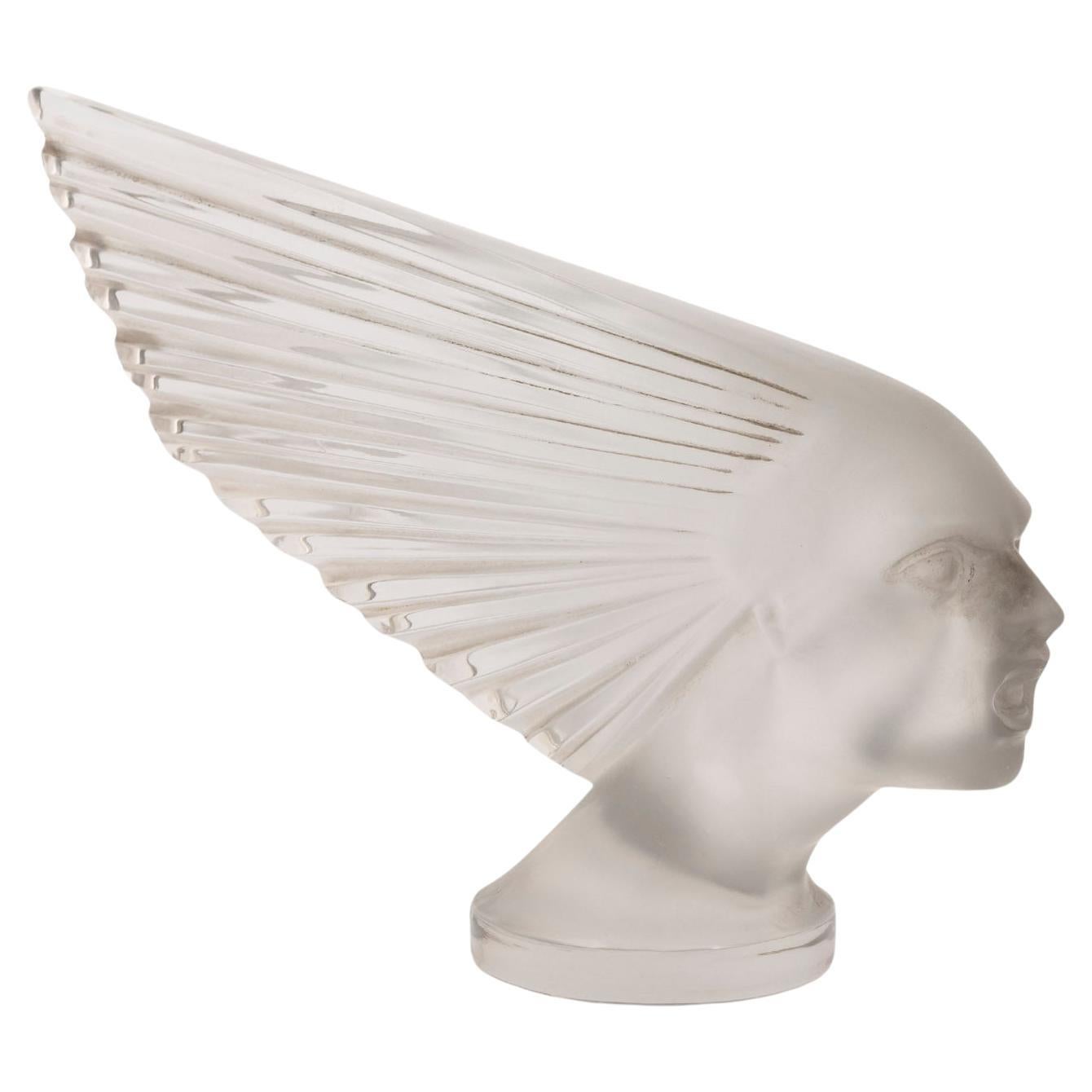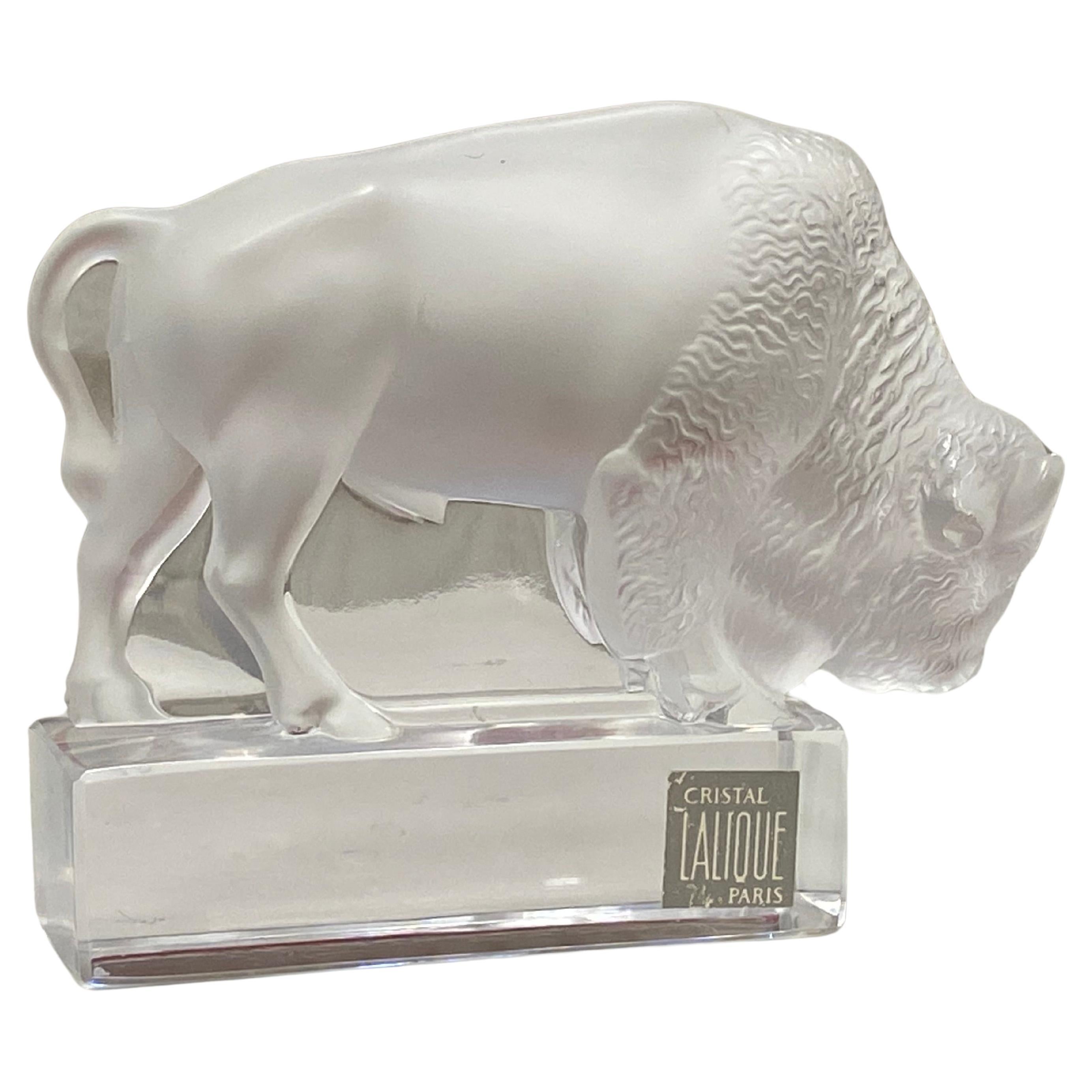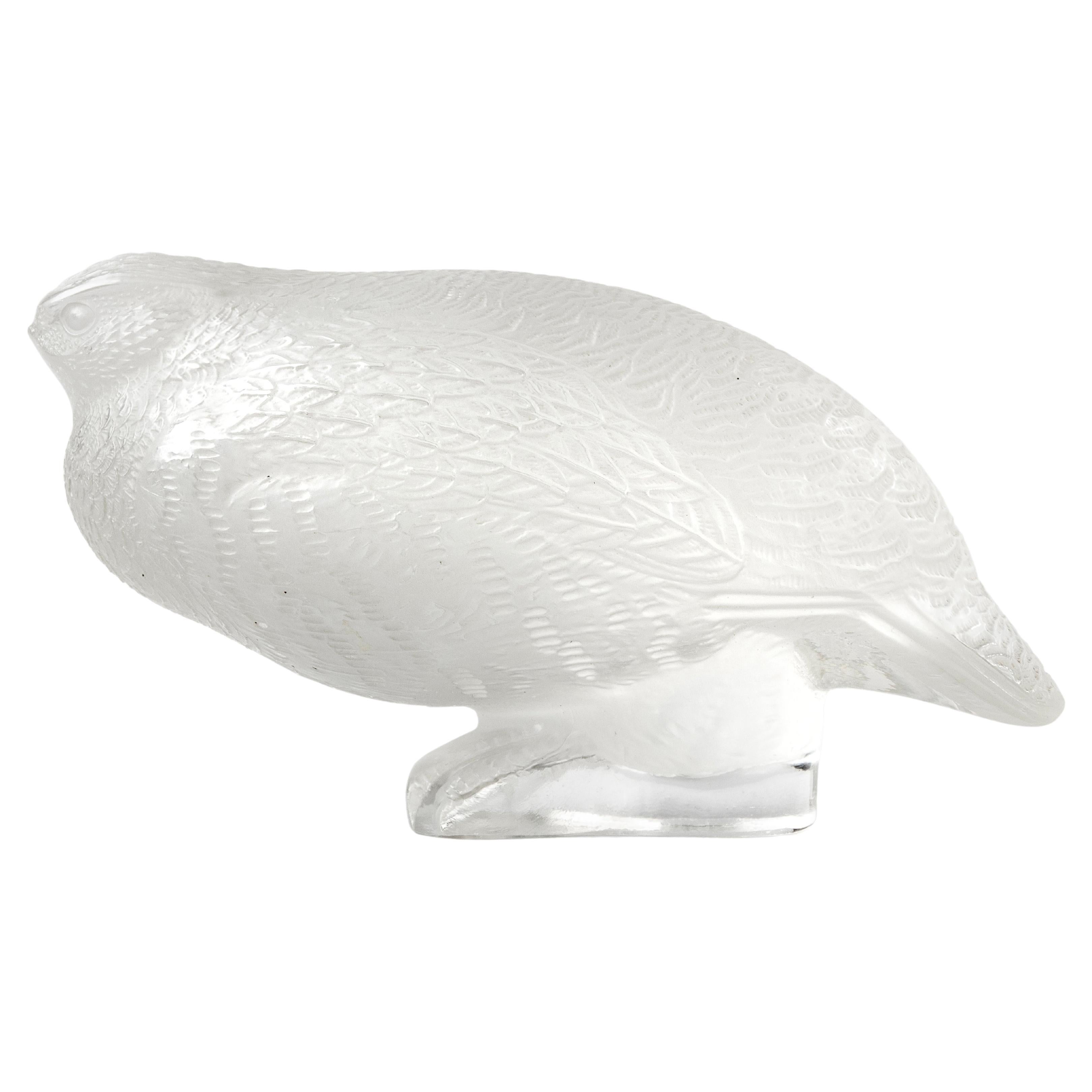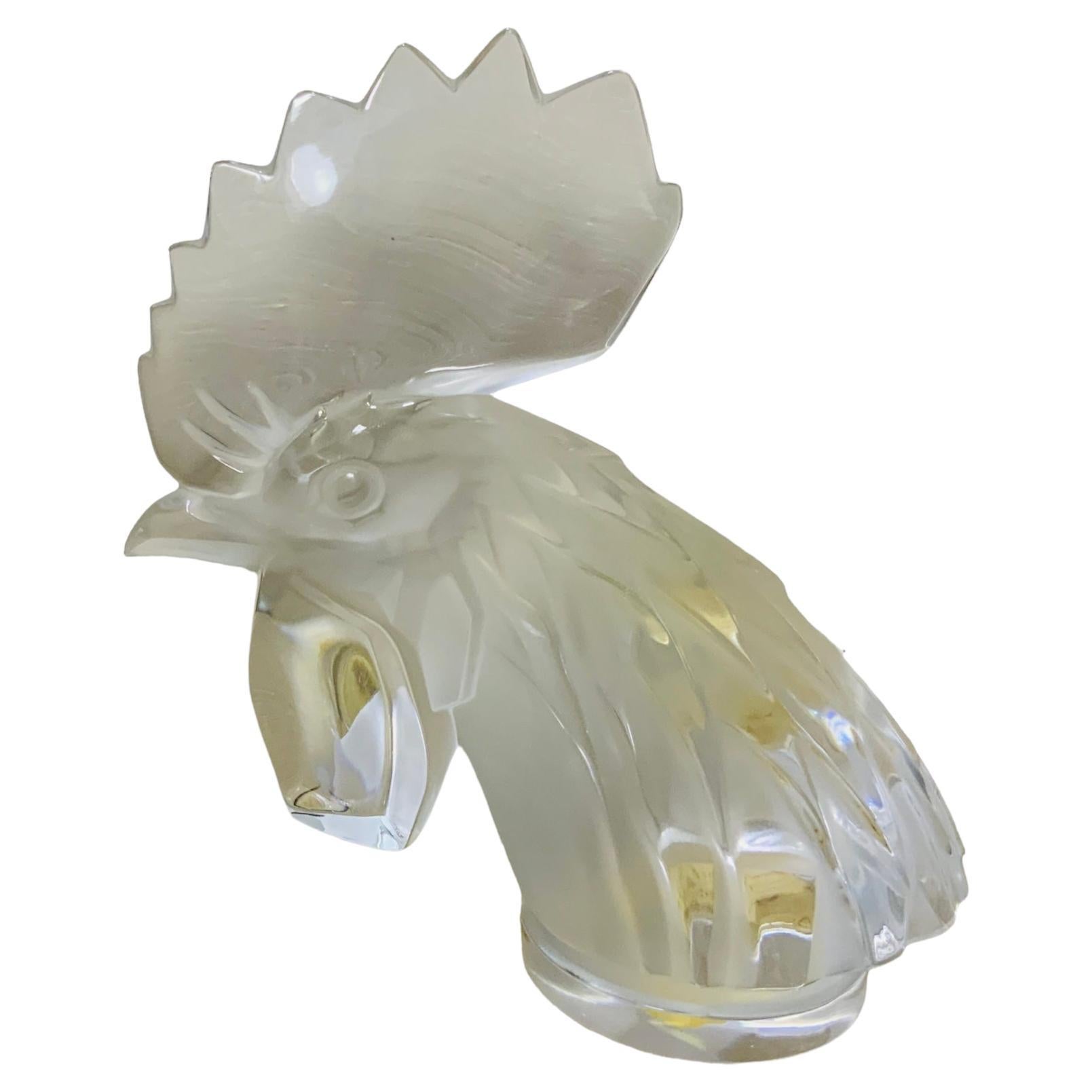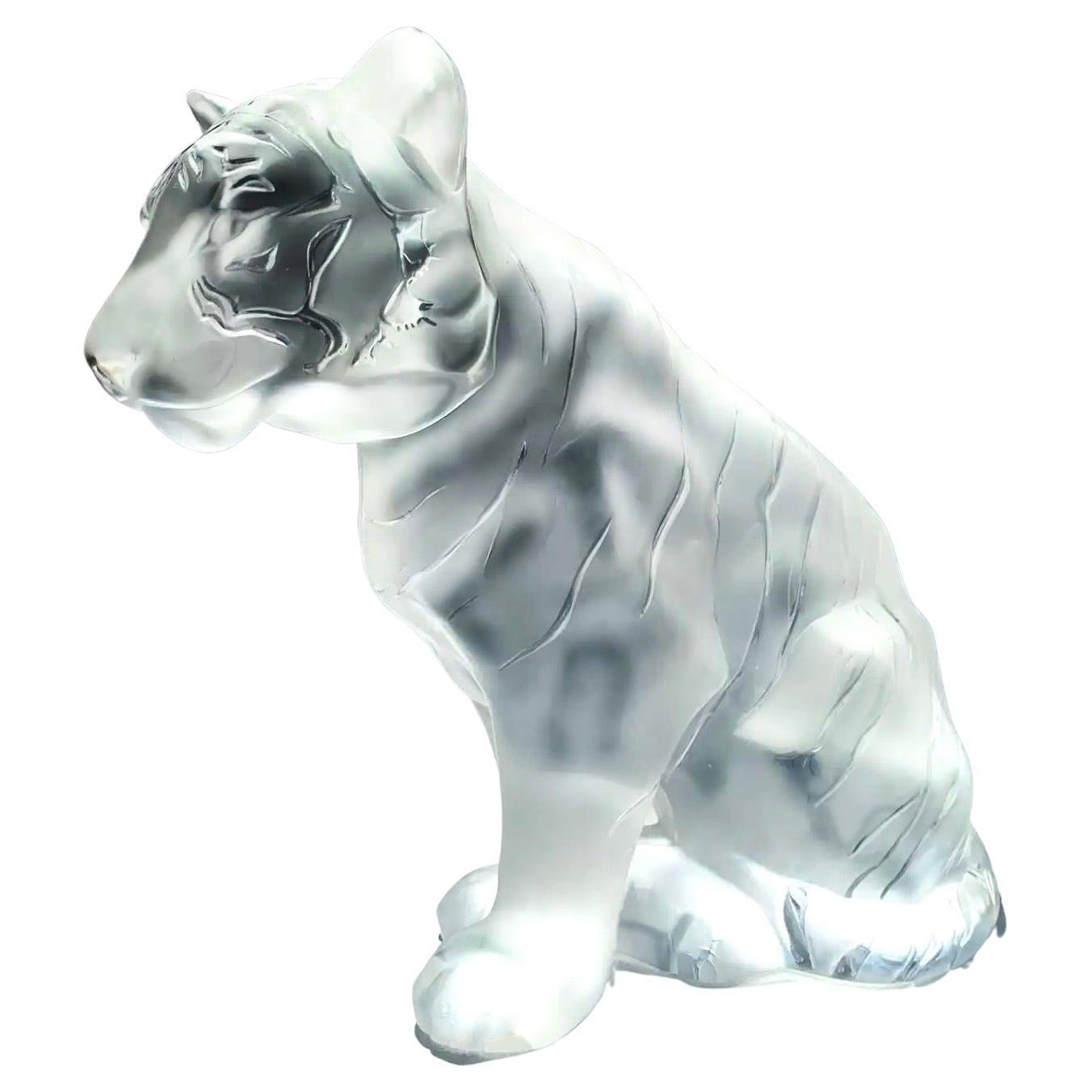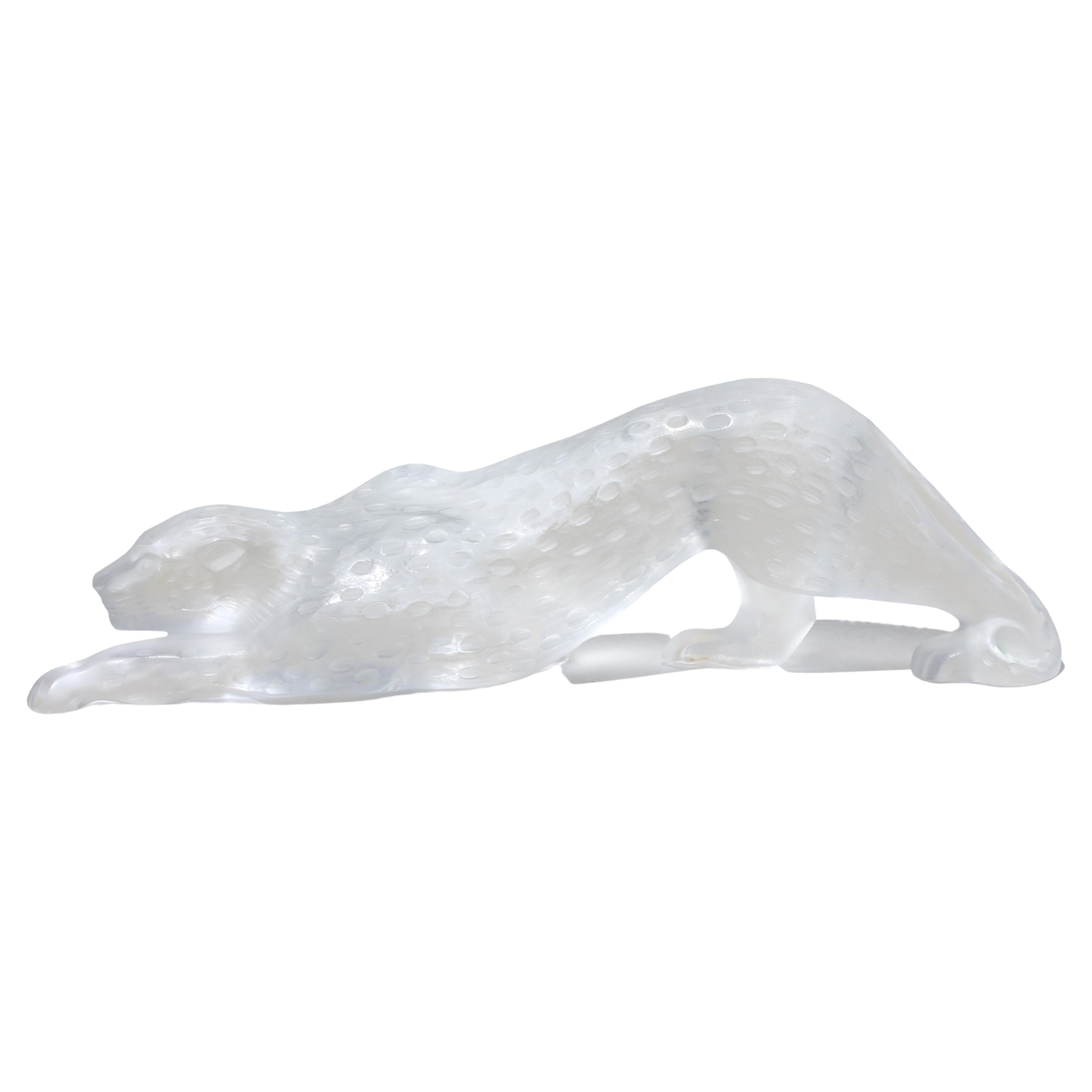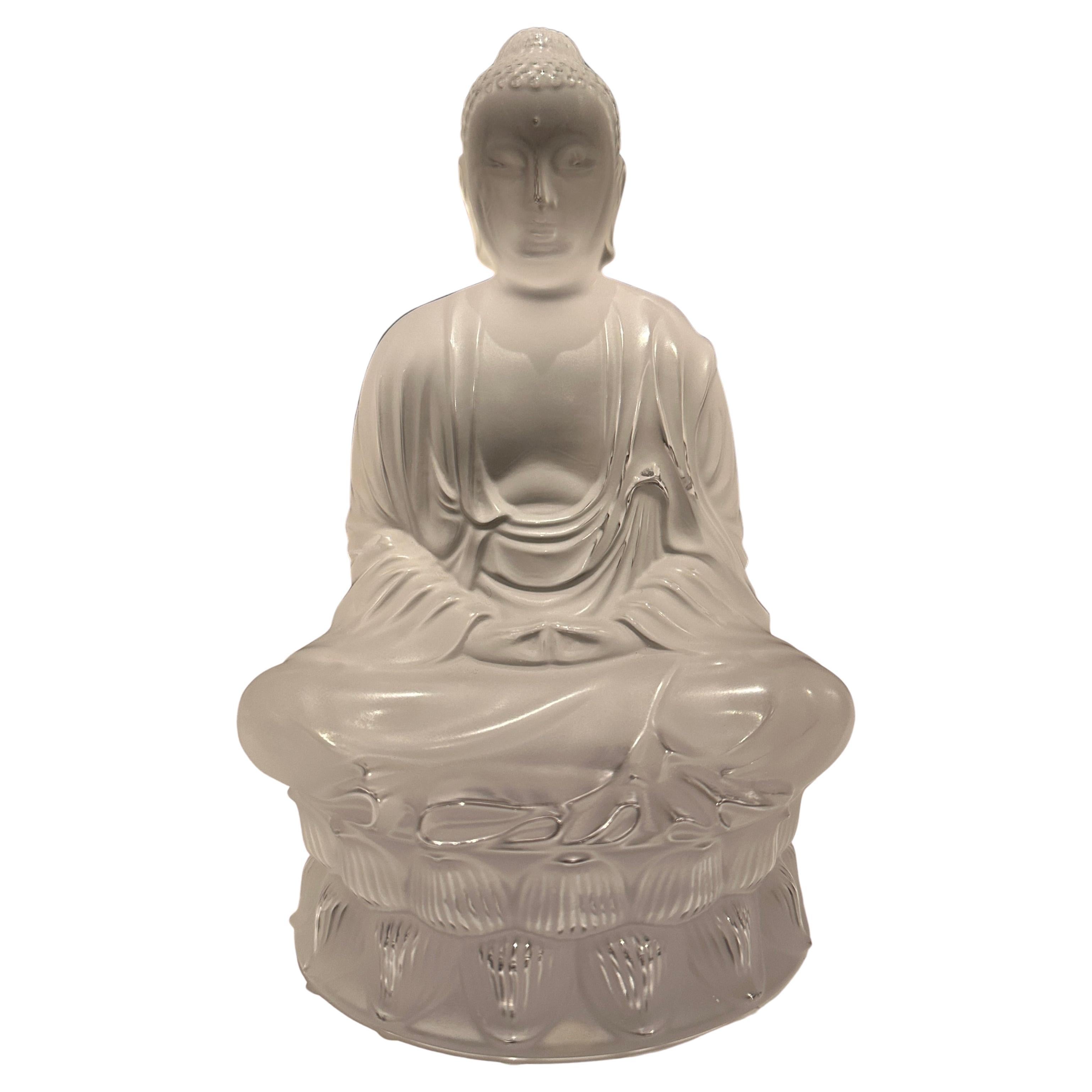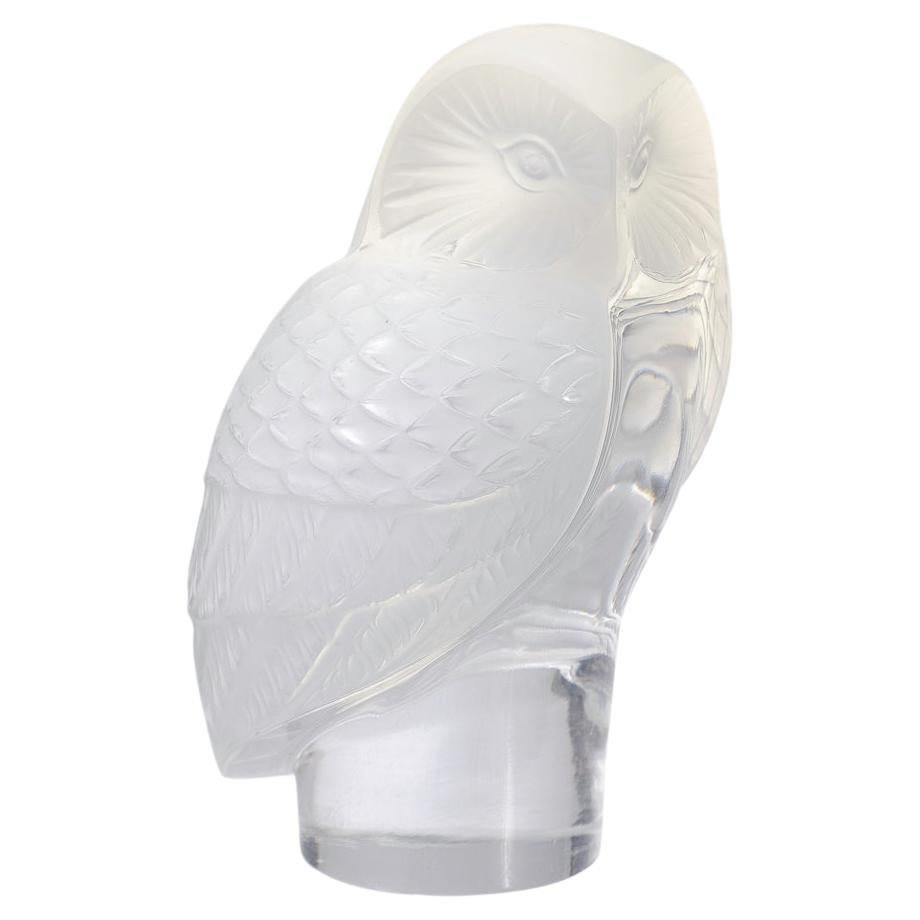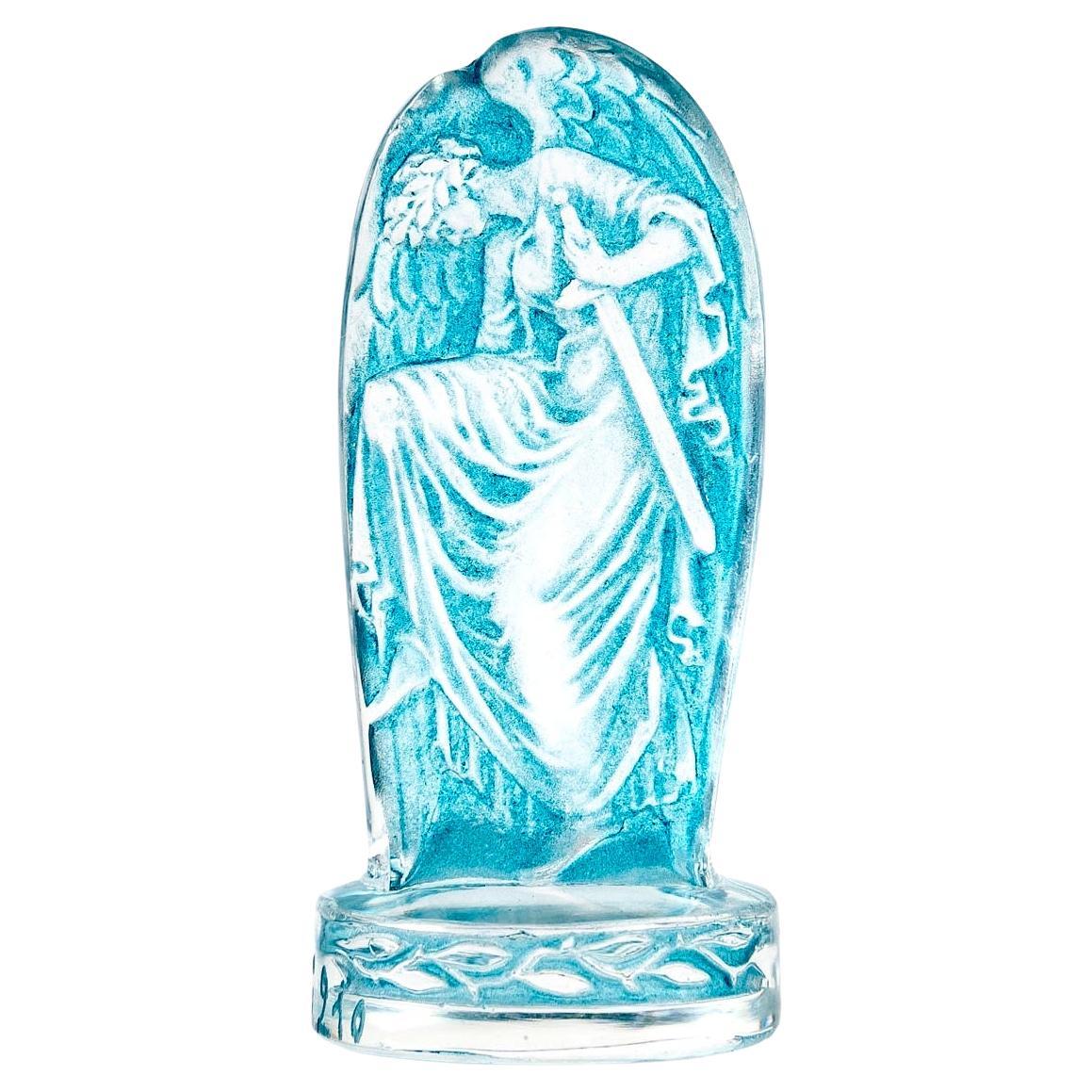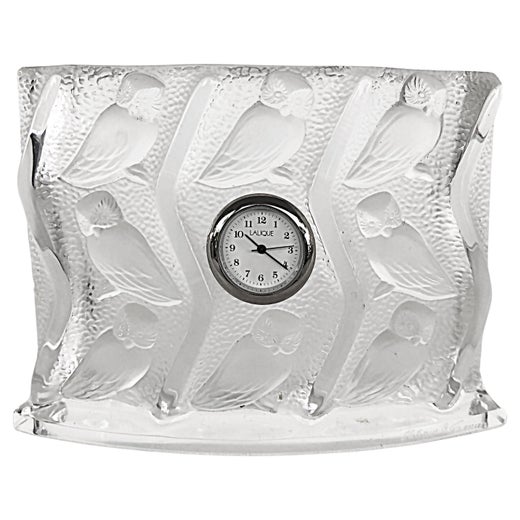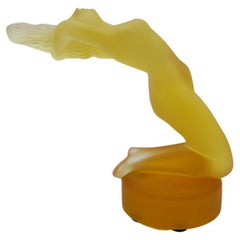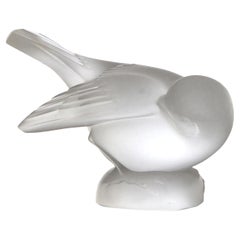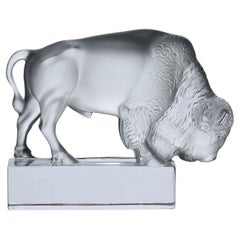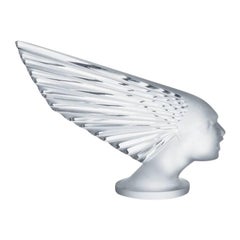
Lalique Victoire Paperweight Clear Crystal
View Similar Items
Lalique Victoire Paperweight Clear Crystal
About the Item
- Creator:René Lalique (Designer),Lalique (Manufacturer)
- Dimensions:Height: 6.14 in (15.6 cm)Width: 9.84 in (25 cm)Depth: 9.84 in (25 cm)
- Style:Art Deco (In the Style Of)
- Materials and Techniques:Crystal,Molded
- Place of Origin:
- Period:
- Date of Manufacture:Contemporary
- Production Type:New & Custom(Current Production)
- Estimated Production Time:Available Now
- Condition:
- Seller Location:New York, NY
- Reference Number:Seller: 101082001stDibs: LU2650310523163
René Lalique
The career of the famed jewelry designer, glassmaker and decorative artist René Lalique spanned decades and artistic styles. Best known today for his works in glass, Lalique first won recognition for his jewelry. He was described as the inventor of modern jewelry by the French artist and designer Émile Gallé, and his luxurious naturalistic designs helped define the Art Nouveau movement. Later as a glassmaker in the 1920s and ‘30s, Lalique designed vases, clocks, chandeliers and even car hood ornaments that were the essence of Art Deco chic. Even now, the name Lalique continues to be a byword for a graceful, gracious and distinctively French brand of sophistication.
Born in 1860 in the Marne region of France, Lalique began his career as a jewelry designer in the last decades of the 19th century. His work employed now-classic Art Nouveau themes and motifs: flowing, organic lines; forms based on animals, insects and flowers — all rendered in luxurious materials such as ivory, enamel, gold and semi-precious stones. By 1905, Lalique had begun creating works in glass, and his style began to shift to a cleaner, sharper, smoother, more modern approach suited to his new medium. His Paris shop’s proximity to perfumer François Coty’s led him to experiment with beautiful perfume bottles. He offered the first customized scent bottles, transforming the perfume industry. By the end of the First World War, the artist had fully embraced Art Deco modernity, devoting himself to new industrial techniques of glass production and designs that manifest the sweeping lines and the forms suggestive of speed and movement characteristic of the style. Lalique’s work looked both backward and forward in time: embracing ancient mythological themes even as it celebrated modern progress.
Late in his career, Lalique took on high profile luxury interior design projects in Paris, Tokyo and elsewhere. He designed decorative fixtures and lighting for the interior of the luxury liner Normandie in 1935, and decorated the salons of well-known fashion designer Madeleine Vionnet. Today, Lalique’s influence is as relevant as it was when he opened his first jewelry shop in 1890. In a modern or even a traditional décor, as you will see from the objects offered on these pages, the work of René Lalique provides the stamp of savoir-faire.
Lalique
Lalique is a beacon of French opulence in glassmaking and decorative arts, an enduring brand with a history spanning over 130 years and at least three movements in art and design: Art Nouveau, Art Deco and modernism. The firm’s founder, René Lalique, is a celebrated figure in Art Nouveau jewelry, which drew on feminine forms and natural-world themes. Under his masterful leadership, Lalique came to be known for its gorgeous vases, sculptures and glass and crystal serveware.
Rene Laliqué was born in 1860 in Aÿ-en-Champagne, France. As a young man, he apprenticed under Parisian Art Nouveau jeweler Louis Aucoc and studied at L'École nationale supérieure des Arts Décoratifs. Lalique's skill and esteem broadened, and he created jewelry for renowned houses like Cartier and Boucheron. He took over a workshop in Paris in 1885 and opened his own business soon afterward. Not one to follow trends, Lalique gained popularity for his innovative accessories, which merged glass, enamel and ivory — materials that were uncommon in jewelry-making — with semi-precious stones and metals. Lalique’s work gained greater prominence at the 1900 Paris Exhibition, which served as a showcase for his extraordinary designs.
In 1907, Lalique began a revolutionary partnership with French perfumer François Coty. He designed a line of molded glass perfume bottles with frosted surfaces and patterned reliefs. Lalique opened his eponymous glassworks in Combs-La-Ville, Paris, in 1909. His attractive bottles and other pieces were shown at the International Exhibition of Modern Decorative and Industrial Arts in 1925 — the event that brought Art Deco to worldwide attention — catapulting Lalique to new levels of fame. Shortly afterward, in 1927, he created one of his most iconic pieces: the Bacchantes vase. A marvel of glassmaking that convincingly depicted movement, the vase displays his technical skills and artistry.
Lalique began receiving high-profile commissions — in 1929, he decorated the luxurious Côte d’Azur Pullman Express carriages, and in 1935, he designed lighting for the Grand Salon and dining room on the ocean liner SS Normandie.
Lalique died in 1945, and the reins at the company were passed to his son, Marc Lalique. The firm continued to produce its signature glass pieces as well as crystal vases, decor and serveware. Marc's daughter, Marie-Claude Lalique, became CEO in 1977. She renewed the traditional jewelry and fragrance side of the business. In 2008, Lalique was acquired by Art & Fragrance, now known as Lalique Group. It remains a well-regarded lifestyle brand underpinned by a rich history in glassmaking.
On 1stDibs, find vintage Lalique decorative objects, lighting, tables and more.
- Rare Lalique "Chrysis" Mascot or Paperweight in Amber Crystal Art Deco FranceBy René Lalique, LaliqueLocated in Cathedral City, CAPresenting this fabulous "Chrysis" nude woman mascot or paperweight crafted in etched and polished amber crystal. This example is a limited edition release from the late 1990s produc...Category
1990s French Art Deco Paperweights
MaterialsCrystal
- Lalique France Vintage Crystal Moineau Coquet Bird Paperweight - FREE SHIPPINGBy LaliqueLocated in Bochum, NRWVintage crystal Moineau Coquet from the Birds Series by René Lalique Signed at the base Lalique@France and with original manufacturer label. Perfect condition.Category
Vintage 1970s French Art Deco Animal Sculptures
MaterialsCrystal
- 20th Century Clear Glass Sculpture Entitled "Bison Paperweight" by Lalique GlassBy LaliqueLocated in London, GBAn impressive clear and frosted glass paperweight in the form of a grazing bison with excellent hand finished detail, signed Lalique France ADDITIONAL INFORMATION Height: 9.5 cm Width: 12 cm Condition: Excellent Condition circa: 1970 Materials: Frosted Glass ABOUT Lalique Glass René Lalique (1860-1945) began his career as a jewellery apprentice at the age of 16, and by 1881 he was a freelance designer for many of the best-known Parisian jewellers. In 1885, he opened his own workshop on Place Gaillon in Paris, the former workshop of Jules Destape. In 1887, Lalique opened a business on Rue du Quatre-Septembre, and registered the "RL" mark the following year. In 1890, he opened a shop in the Opera District of Paris. Within a decade, Lalique was amongst the best-known Parisian jewellers. In 1905, Lalique opened a new shop at Place Vendôme which exhibited not only jewellery, but glass works as well. It was close to the shop of renowned perfumer François Coty; in 1907, Lalique began producing ornate perfume bottles for Coty. The production of glass objects began at his country villa in 1902, and continued there until at least 1912. The first Lalique glassworks opened in 1909 in a rented facility in Combs-la-Ville, which Lalique later purchased in 1913. In December 1912, Lalique hosted an exhibition of Lalique Glass—as his glass would come to be known—at the Place Vendôme shop. During the First World War, the glassworks produced mundane items in support of the war effort. In 1919, work began on a new production facility in Wingen-sur-Moder, which opened in 1921. From 1925-1931, Lalique produced 29 models of hood ornaments; a mermaid statuette first produced in 1920 was also later sold as a hood ornament. During the 1920s and 1930s, Lalique was amongst the world's most renowned glassmakers. René Lalique died in 1945. His son Marc Lalique took over the business, operating initially as "M.Lalique" and later as "Cristal Lalique...Category
Late 20th Century French Art Deco Animal Sculptures
MaterialsGlass
- Original Art Deco Rene Lalique Victoire Car MascotBy René LaliqueLocated in Northampton, GBOriginal Rene Lalique Car Mascot From our Lalique collection, we are thrilled to offer this original Rene Lalique Victoire Car Mascot. The Mascot fro...Category
Antique Early 19th Century French Art Deco Figurative Sculptures
MaterialsGlass
- Mid-Century Modern Crystal Paperweight / Figurine of a Quail Bird, LaliqueBy LaliqueLocated in Casteren, Noord-BrabantBeautiful crystal figurine or paperweight of a quail bird, made of frosted crystal. Marked on the bottom 'Lalique'. This figurine was issued in 1968. Nicely detailed design. The figu...Category
Vintage 1960s French Mid-Century Modern Glass
MaterialsCrystal
- Glass Sculpture Paperweight "Bison" by LaliqueBy LaliqueLocated in Vienna, ATA bison glass sculpture made of clear and frosted glass. Made in the 1970s by Lalique in Paris.Category
Vintage 1970s French Art Deco Animal Sculptures
MaterialsArt Glass
